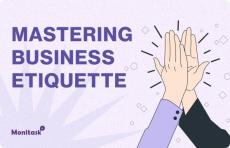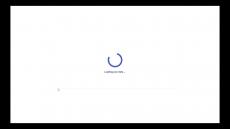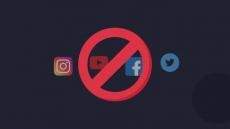|
By Junun Saleh
Business etiquette refers to the set of behaviors, manners, and practices that are deemed appropriate and respectful in professional settings. Mastering business etiquette is essential for building strong relationships, fostering trust, and creating a positive impression, whether you’re interacting with colleagues, clients, or stakeholders. Below, we explore the key principles of business etiquette and how to implement them in the workplace.
|
By Junun Saleh
Employee monitoring software is essential for tracking productivity and ensuring workplace efficiency, especially with remote teams. However, some employees may use tools like mouse jigglers to trick the system into showing them as “active,” even when they are away from their workstations. These devices can undermine your efforts to maintain a productive and secure work environment but detecting and addressing their use with the right strategies can be simple.
|
By Junun Saleh
Managing employee performance and behavior is essential for a productive and harmonious workplace. An employee write-up form is a key tool that helps employers document incidents, address misconduct, and ensure clarity in workplace expectations. Properly crafted, this form serves as a record that supports consistent and fair employee management while protecting the company from potential legal issues.
|
By Junun Saleh
An emergency contact form is an essential document in every workplace, ensuring that in case of an emergency, employers can quickly reach the necessary individuals to support employees. Whether it’s a workplace accident, a sudden illness, or any other urgent situation, having up-to-date emergency contact information helps ensure the safety and well-being of employees. This article explores the importance of emergency contact forms and best practices for creating and maintaining them.
|
By Junun Saleh
As we enter 2025, the role of data in shaping organizational decisions has never been more significant. Among the most transformative developments is People Analytics, a method of leveraging data to enhance decision-making related to employees. Whether it’s improving recruitment processes, boosting employee engagement, or fostering better leadership, People Analytics has become a vital tool for businesses aiming to gain a competitive edge.
|
By Junun Saleh
A self-managed team is a group of individuals empowered to make decisions, set goals, and manage their own work processes without constant oversight from a traditional manager. These teams are responsible for organizing their own tasks, solving problems, and holding themselves accountable for their results. In a self-managed team, each member is encouraged to contribute their skills and expertise, fostering collaboration and collective responsibility.
|
By Junun Saleh
Time blocking is a powerful productivity technique that helps individuals take control of their time by planning tasks and activities into dedicated blocks. This approach promotes focus, reduces distractions, and fosters a sense of accomplishment. In this article, we’ll explore the concept of time blocking, how it works, its benefits, and ways to overcome potential pitfalls.
|
By Junun Saleh
A resignation email is a formal written communication that an employee sends to their employer to announce their decision to leave a job position. It serves as an official notification of resignation, providing key details such as the employee’s last working day and any transitional support they are willing to offer. This email is often sent to a direct supervisor, the human resources department, or both, depending on the company’s policy.
|
By Junun Saleh
Your morning routine sets the tone for your entire day. Whether you’re juggling a demanding job, pursuing personal goals, or simply striving to be more organized, the way you start your morning can have a ripple effect on your productivity, energy, and mood. Crafting a structured and purposeful morning routine is not about rigid schedules; it’s about creating a framework that supports your best self.
|
By Junun Saleh
With the increasing adoption of employee monitoring tools in workplaces, organizations in the European Union (EU) must navigate the General Data Protection Regulation (GDPR) to ensure compliance. Employee monitoring can provide valuable insights into productivity and security, but it also raises significant privacy concerns. GDPR establishes clear rules to balance organizational needs with employee privacy rights.
|
By Monitask
Screenshot monitoring is completely transparent to the employees and they control when the monitoring starts and when it stops.
- January 2025 (1)
- December 2024 (7)
- November 2024 (14)
- October 2024 (3)
- September 2024 (6)
- August 2024 (8)
- July 2024 (8)
- June 2024 (10)
- May 2024 (16)
- April 2024 (13)
- March 2024 (13)
- February 2024 (7)
- January 2024 (8)
- December 2023 (12)
- November 2023 (22)
- October 2023 (1)
- September 2023 (20)
- August 2023 (23)
- July 2023 (15)
- June 2023 (11)
- May 2023 (14)
- April 2023 (12)
- March 2023 (13)
- February 2023 (12)
- January 2023 (12)
- December 2022 (12)
- November 2022 (14)
- October 2022 (12)
- September 2022 (8)
- August 2022 (9)
- July 2022 (13)
- June 2022 (14)
- May 2022 (14)
- April 2022 (11)
- March 2022 (9)
- February 2022 (3)
- October 2021 (1)
- August 2021 (5)
- July 2021 (8)
- June 2021 (8)
- May 2021 (3)
- April 2021 (5)
- March 2021 (4)
- February 2021 (6)
- January 2021 (3)
- December 2020 (4)
- November 2020 (7)
- October 2020 (6)
- May 2020 (2)
- April 2020 (1)
- March 2020 (1)
- February 2020 (1)
- January 2020 (1)
- November 2019 (2)
- May 2017 (1)
Monitask is an easy-to-use time-tracking software designed for remote teams of employees that includes automatic timesheets and screenshots of employees’ workstations as proof of work done. Screenshot monitoring is completely transparent to the employees and they control when the monitoring starts and when it stops.
Employee Monitoring Software with Screenshots:
- View Employee Computer Screenshots and Records: Our application allows employees and freelancers to manually start a clock when they begin working on an assignment for employers. The application will take computer screenshots randomly or at intervals assigned by the employer, which can be reviewed online, as evidence that work is being performed. No spying, only transparency.
- View Apps Used By Your Team: Monitask monitoring allows you to check the programs your employee or freelancer uses when they track time. You can view a report to let you know each time a program is used and for how long. Analyze the best programs for your workplace to ensure you’re paying for the programs you actually need.
- Create Projects For Your Team: Monitask helps you to manage your team members’ projects. Simply create a project, assign relevant employees, and use the time tracking functionality to gather all the information you need on the project’s progress.
Monitask helps you to stay in touch with your remote team.















